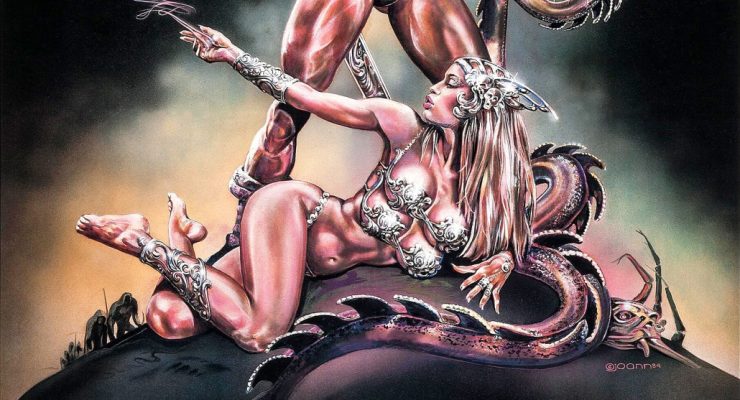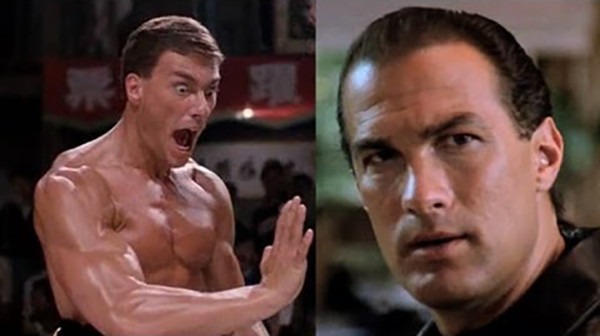Luke Owen kicks off Monster Movie Mondays with the 1954 classic, Gojira…
Director: Ishiro Honda
Producer: Tomoyuki Tanaka
Writer(s): Ishiro Honda, Takeo Murata
Released Date: November 3rd 1954
Appearing Monsters: Godzilla
Also Released as: Godzilla: King of the Monsters (US)
In the Spring of 1954, movie producer Tomoyuki Tanaka was going through some tough times. His war movie Shadow of Honor, which was to be one of Toho’s biggest releases of the year, had fallen through due to disagreements about the script and he needed to make a movie fast. While on a plane ride back from Indonesia (who were co-financing Shadow of Honor), Tanaka read a news story about fishing boat Daigo Fukuryu Maru [Lucky Dragon 5], which had been effected by the US nuclear testing on the Pacific archipelago of Bikini. At the time, the 15 megaton thermonuclear weapon was the biggest man-made explosion and the radiation it created killed several of the crew along with military personal and island natives. This news story was the main catalyst for a movie that would give birth to a Japanese icon, the King of the Monsters, Godzilla.
While the news story was instrumental in Gojira‘s geneisis, there were two American movies that also played pivitol roles: Eugene Lourie’s The Beast from 20,000 Fathoms and the 1933 classic King Kong. The former played a huge part in the early stages of the script that was initially titled The Giant Monster from 20,000 Miles Beneath the Sea in not only its name, but also its plot and themes. Lourie’s movie, a science fiction tale of a dinosaur woken up by an Atomic explosion and then wreaks havoc in New York City, bears a huge resemblance to Gojira and the Rhedosaurus creature would guide Tanaka and his team in terms of their monster’s design. Options like a giant octopus and a gorilla/whale hybrid were ultimately rejected in favour of a giant reptile as it was “more suited to the time period” as Tanaka put it. Before the script was re-written by director Ishiro Honda and Takeo Murata, Gojira was to open with the monster attacking a lighthouse, a scene borrowed directly from Lourie’s sci-fi classic.
Suitmation certainly made it easier for Tsuburaya in terms of cost-cutting, but it wasn’t easy on Nakajima, who really suffered during the movie’s production. The Gojira suit was 6 1/2 foot tall and weighed nearly 220 pounds and, according to Nakajima, was akin to wearing a straight jacket. When he first stepped into the suit via the opening on the spine, he couldn’t move his fingers or his neck and he struggled to breathe. He took a few steps forward and fell over and when he was removed from the suit, he was drenched in sweat. The suit was altered during production and Nakajima would often only need to wear either the top or bottom half depending on what scenes they were filming. Even with a suit that was easier to maneuver in, Nakajima’s working conditions were pretty grueling, often suffering from bouts of exhaustion and dehydration.
After various names, the script and monster were eventually named Gojira, which roughly translates to a combination of gorilla and whale in English. The legend goes that it was a nickname used for a burly Toho stage hand who many would describe as being as big as a gorilla (gorira) and a whale (kajira) combined. Tanaka has recounted the story and Ishiro Honda himself re-affirmed the name shortly before his death, but the employee in question however has never come forward or been named. Many (including Honda’s wife) feels it was a myth made up by the filmmakers.
Filmed over 51 days, Gojira is a masterful movie with a dark and gritty tone that doesn’t shy away from its political message. The King of the Monster’s later movies may have adopted a lighter and friendlier approach, but his first appearance is one of a warning. Never more clear is this than Dr. Yamane’s closing piece of dialogue, “I can’t believe that Godzilla was the only surviving member of its species… But if we continue conducting nuclear tests… it’s possible that another Godzilla might appear somewhere in the world again”.
Through clever camera choices and techniques, Ishiro Honda creates an impressive sight as the towing Godzilla smashes through beautifully crafted and meticulously designed recreations of some of Tokyo’s most famous landmarks. In short, Gojira is simply a great movie. It’s not just a great B-movie; it’s a really well made and entertaining affair. Some might claim that message is heavy handed (and they are right), but the message is very effective. Scenes like the children’s choir singing over shots of injured victims are incredibly haunting and there is a particuarly harrowing moment where a mother grabs her children as Godzilla’s atomic breath ablitorates the building around them. It’s a total one-eighty from the movies that The King of the Monsters would eventually be remembered for during the 60s and 70s.
However, at the time of its release Gojira was not received particularly well by the public or film critics. Honda said, “They called it grotesque junk, and said it looked like something you’d spit up”. However, since its initial bashing, Gojira has gone on to become an icon of Japanese cinema and a much respected movie. George Lucas has even cited it as one of his influences when creating the special effects for Star Wars. Many film critics have labelled it as one of the best Japanese movies ever made, although Roger Ebert still doesn’t think very highly of it, “In these days of flawless special effects, Godzilla and the city he destroys are equally crude. Godzilla at times looks uncannily like a man in a rubber suit, stomping on cardboard sets, as indeed he was, and did”.
Godzilla: King of the Monsters (1956)
Although Gojira was released in American cinemas with subtitles in 1955, Jewel Enterprises decided to re-edit the movie and re-release it for a larger audience – one that wouldn’t be put off by a subtitled film. Actor Raymond Burr was cast as new lead character Steve Martin – a news reporter sent from America to document the strange disturbances that were happening in Tokyo. They shot new sequences with Burr, which mostly amounted to him narrating what was happening on-screen, which were then inter-spliced with original footage. The movie was re-named Godzilla: King of the Monsters and released in April of 1956 to mostly positive reviews.
Godzilla: King of the Monsters is a very interesting movie and makes for a good case study in today’s Hollywood society of simply remaking a foreign film from scratch. Because of the addition of Burr’s scenes, the film required little to no subtitles. Instead, during dialogue scenes, Burr has it translated to him by his interpreter. While this may sound weird and off-putting (which at times it can be), it almost adds a level of realism that doesn’t come across in straight-up re-dubbing.
As the 8th most watched film in Japan in 1954, Gojira would kick start a trend of kaiju movies from Toho over the next few years including Rodan, Varan and The Mysterions. And they all had their merits, it would be Godzilla who would become a household name in one of the longest running franchises of all-time.
Luke Owen is one of Flickering Myth’s co-editors and the host of the Flickering Myth Podcast. You can follow him on Twitter @LukeWritesStuff.










